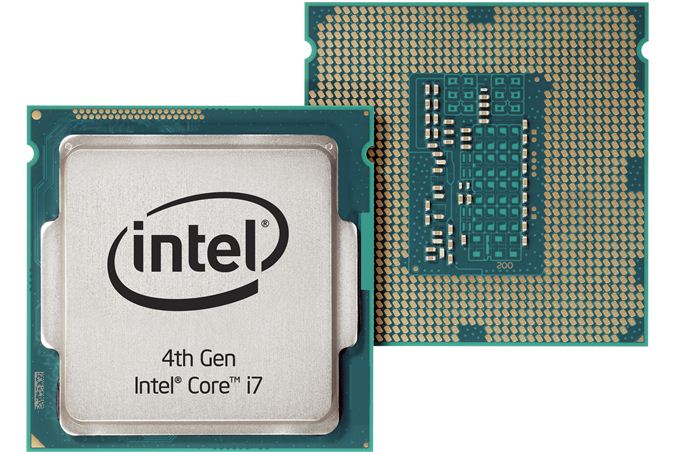Intel's Haswell - An HTPC Perspective: Media Playback, 4K and QuickSync Evaluated
by Ganesh T S on June 2, 2013 8:15 PM EST
Over the last two years, the launch of every major desktop CPU family from both AMD and Intel has been accompanied by a dedicated HTPC-oriented article. This coverage has been complementary to Anand's extensive analysis from a general computing perspective. Haswell will be no different. The advancements made from Llano to Trinity and from Sandy Bridge to Ivy Bridge had rendered entry level platforms good enough for casual / mainstream HTPC users. Advanced users still require discrete GPUs for using some video renderers and obtaining accurate display refresh rates. Each vendor has their own quirks when it comes to driver features and stability. This has made it difficult to declare any one solution as the perfect HTPC platform. Intel has hyped up improved GPU performance in the lead up to Haswell.
Has Intel improved the GPU performance and video-centric features enough to make discrete GPUs redundant for HTPCs? More importantly, how much of an improvement do we have over the HD4000 in Ivy Bridge? This question will be looked at from multiple angles in the course of this review. We will determine whether the shortcomings of Ivy Bridge (rendering benchmarks and refresh rate support, primarily) have been addressed. Also of importance are the HTPC configuration options, stability and power efficiency.
In this review, we present our experience with low-power desktop Haswell as a HTPC platform. We have listened to feedback from our earlier HTPC reviews at launch time and made efforts to source a low power CPU suitable for HTPC duties. In earlier HTPC reviews put out at launch time, we used the highest end CPU sampled by Intel / AMD. This time around, thanks to ASRock, we managed to get hold of an Intel Core i7-4765T CPU along with their mini-ITX motherboard, the Z87E-ITX.
In the first section, we tabulate our testbed setup and detail the tweaks made in the course of our testing. A description of our software setup and configuration is also provided. Following this, we cover the video post processing options provided by the Intel drivers. A small section devoted to the custom refresh rates is followed by some decoding and rendering benchmarks. No HTPC solution is completely tested without looking at the network streaming capabilities with respect to some of the popular OTT (over-the-top) services. 4K is the next major upgrade stop for the casual HTPC user. Haswell does have 4K display support and we will have a dedicated section to see how well it works. We are finally at a point where GPU encoders have become stable and popular enough for mainstream open source projects to utilize. A section is devoted to Handbrake's integration of QuickSync capabilities. In the final section, we cover miscellaneous aspects such as power consumption and then proceed to the final verdict.










95 Comments
View All Comments
mindbomb - Sunday, June 2, 2013 - link
The current version of madvr does support dxva native actually.gevorg - Sunday, June 2, 2013 - link
The near $300 price of i7-4765T is extremely price prohibitive for HTPC use. Majority of users will find AMD's Trinity APUs to be perfect for HTPC job.Also, unless Intel handicapped it, you should be able to downclock any i7 Haswell CPU to be near i7-4765T speed/TDP. This is possible with Sandy Bridge and Ivy Bridge chips.
meacupla - Sunday, June 2, 2013 - link
the only problem with trinity is the rather limited choice of mITX mobos and rather high power consumption and thermal output, which makes them not ideal for compact HTPCs...Although, granted, for $300 for the CPU alone, I'd much rather buy an xboxone or PS4.
HisDivineOrder - Tuesday, June 4, 2013 - link
You just listed four problems while saying, "the only problem with trinity." That's the real problem with AMD's options. There's like "one problem" for everyone.Spunjji - Tuesday, June 4, 2013 - link
Except for those of us for whom there are none, and/or are prepared to live with limitations to not have to shell out $300 on a CPU.vnangia - Sunday, June 2, 2013 - link
Very true. The SNB low-TDP parts were within spitting distance of their equivalent regular-TDP parts (about $25-50 more), not $200 more.JDG1980 - Sunday, June 2, 2013 - link
If you can wait six months or so, you're probably going to be better off going with Kaveri. AMD is going to be substantially increasing the GPU power of their APU and switching to a homogenous memory architecture so everything uses GDDR5. What little I've heard (which may not be reliable) seems to indicate that the GPU in Kaveri may be about on par with the discrete 7750. I don't know if they can pull that off, but if they even come close then they will have basically rendered all sub-$100 discrete GPUs obsolete.lmcd - Sunday, June 2, 2013 - link
Inaccurate. $100 GPUs will have improved by Kaveri's release. And AMD's drivers won't necessarily meet the expectations set here either.medi02 - Monday, June 3, 2013 - link
This driver FUD is getting old...Spunjji - Tuesday, June 4, 2013 - link
Very old, but don't expect it to stop.